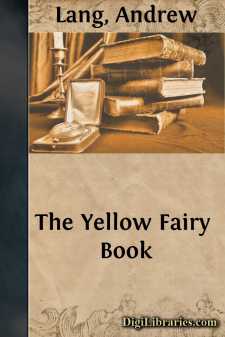Categories
- Antiques & Collectibles 13
- Architecture 36
- Art 48
- Bibles 22
- Biography & Autobiography 813
- Body, Mind & Spirit 142
- Business & Economics 28
- Children's Books 17
- Children's Fiction 14
- Computers 4
- Cooking 94
- Crafts & Hobbies 4
- Drama 346
- Education 46
- Family & Relationships 57
- Fiction 11829
- Games 19
- Gardening 17
- Health & Fitness 34
- History 1377
- House & Home 1
- Humor 147
- Juvenile Fiction 1873
- Juvenile Nonfiction 202
- Language Arts & Disciplines 88
- Law 16
- Literary Collections 686
- Literary Criticism 179
- Mathematics 13
- Medical 41
- Music 40
- Nature 179
- Non-Classifiable 1768
- Performing Arts 7
- Periodicals 1453
- Philosophy 64
- Photography 2
- Poetry 896
- Political Science 203
- Psychology 42
- Reference 154
- Religion 513
- Science 126
- Self-Help 84
- Social Science 81
- Sports & Recreation 34
- Study Aids 3
- Technology & Engineering 59
- Transportation 23
- Travel 463
- True Crime 29
Historical Mysteries
by: Andrew Lang
Description:
Excerpt
I
Don't let your poor littleLizzie be blamed!
Thackeray.
'Everyone has heard of the case of Elizabeth Canning,' writes Mr. John Paget; and till recently I agreed with him. But five or six years ago the case of Elizabeth Canning repeated itself in a marvellous way, and then but few persons of my acquaintance had ever heard of that mysterious girl.
The recent case, so strange a parallel to that of 1753, was this: In Cheshire lived a young woman whose business in life was that of a daily governess. One Sunday her family went to church in the morning, but she set off to skate, by herself, on a lonely pond. She was never seen of or heard of again till, in the dusk of the following Thursday, her hat was found outside of the door of her father's farmyard. Her friend discovered her further off in a most miserable condition, weak, emaciated, and with her skull fractured. Her explanation was that a man had seized her on the ice, or as she left it, had dragged her across the fields, and had shut her up in a house, from which she escaped, crawled to her father's home, and, when she found herself unable to go further, tossed her hat towards the farm door. Neither such a man as she described, nor the house in which she had been imprisoned, was ever found. The girl's character was excellent, nothing pointed to her condition being the result d'une orgie échevelée; but the neighbours, of course, made insinuations, and a lady of my acquaintance, who visited the girl's mother, found herself almost alone in placing a charitable construction on the adventure.
My theory was that the girl had fractured her skull by a fall on the ice, had crawled to and lain in an unvisited outhouse of the farm, and on that Thursday night was wandering out, in a distraught state, not wandering in. Her story would be the result of her cerebral condition—concussion of the brain.
It was while people were discussing this affair, a second edition of Elizabeth Canning's, that one found out how forgotten was Elizabeth.
On January 1, 1753, Elizabeth was in her eighteenth year. She was the daughter of a carpenter in Aldermanbury; her mother, who had four younger children, was a widow, very poor, and of the best character. Elizabeth was short of stature, ruddy of complexion, and, owing to an accident in childhood—the falling of a garret ceiling on her head—was subject to fits of unconsciousness on any alarm. On learning this, the mind flies to hysteria, with its accompaniment of diabolical falseness, for an explanation of her adventure. But hysteria does not serve the turn. The girl had been for years in service with a Mr. Wintlebury, a publican. He gave her the highest character for honesty and reserve; she did not attend to the customers at the bar, she kept to herself, she had no young man, and she only left Wintlebury's for a better place—at a Mr. Lyon's, a near neighbour of her mother. Lyon, a carpenter, corroborated, as did all the neighbours, on the points of modesty and honesty.
On New Year's Day, 1753, Elizabeth wore her holiday best—'a purple masquerade stuff gown, a white handkerchief and apron, a black quilted petticoat, a green undercoat, black shoes, blue stockings, a white shaving hat with green ribbons,' and 'a very ruddy colour.' She had her wages, or Christmas-box, in her pocket—a golden half guinea in a little box, with three shillings and a few coppers, including a farthing. The pence she gave to three of her little brothers and sisters. One boy, however, 'had huffed her,' and got no penny. But she relented, and, when she went out, bought for him a mince-pie. Her visit of New Year's Day was to her maternal aunt, Mrs. Colley, living at Saltpetre Bank (Dock Street, behind the London Dock). She meant to return in time to buy, with her mother, a cloak, but the Colleys had a cold early dinner, and kept her till about 9 p.m....












